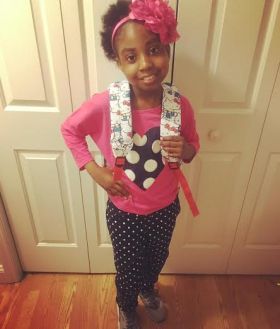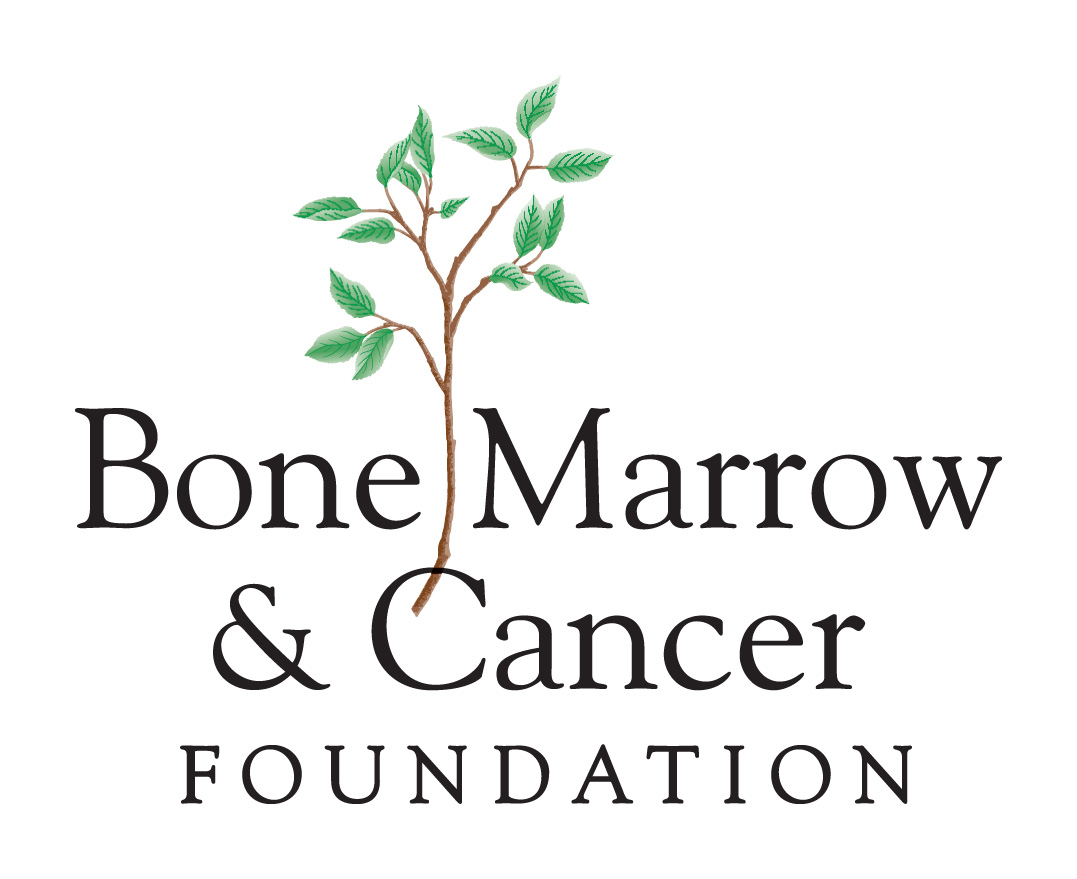Patient Update: Dream Shepherd
 Dream “The Dreamster”, age 11, was born with sickle cell anemia. Sickle cell disease is a hereditary blood disorder which affects hemoglobin that can impact nearly every organ in the body. As so often happens with the condition, Dream has battled a host of complications including chronic pain stemming from diminished levels of oxygen in her cells and a stroke at five years old. She had a haploidentical stem cell transplant in December of 2014.
Dream “The Dreamster”, age 11, was born with sickle cell anemia. Sickle cell disease is a hereditary blood disorder which affects hemoglobin that can impact nearly every organ in the body. As so often happens with the condition, Dream has battled a host of complications including chronic pain stemming from diminished levels of oxygen in her cells and a stroke at five years old. She had a haploidentical stem cell transplant in December of 2014.
Dream was hospitalized and placed in isolation for up to four months. She endured vigorous and invasive procedures in preparation for the transplant; including chemotherapy and radiation in order to receive her transplant to cure her sickle cell disease, but not without facing a long road ahead to complete recovery. Diana spent sleepless nights on a cot in Dream’s hospital room except for the times she went home to pack more clothes to return back to the hospital for months on end. Dream was in a severe weakened physical state, immunosuppressive, high risk for infection, and was bed ridden for the majority of her hospitalization. Diana lived every day advocating for Dream in patient rounds with attending doctors and other healthcare-related professionals. As there wasn’t any paid leave from work, Diana partnered with organizations like The Bone Marrow Foundation to help with non-medical related expenses as she would need to eventually take leave in order to ensure Dream made a successful and complete recovery.
Once it was time for Dream to be discharged, Diana anticipated an uphill battle with the insurance company. Diana did a lot of due diligence pertaining to the needs of a transplant patient by speaking with other parents that went through similar circumstances. Diana worked closely with SKIP of NY (Sick Kids [Need] Involved People) – an organization that acts as a free medical concierge, connecting children to the services and equipment they need to get well and live at home rather than in hospitals or institutions – to advocate for Dream’s after care needs as she transitioned from the care of the hospital to outpatient. Dream and Diana were eventually victorious and the insurance company removed the language that put an unrealistic expectation and requirement on Diana, and Dream was later accepted in the New York State Care at Home program. Though victorious, the process under which Diana and Dream had to fight should not happen to other families.
Diana has been working closely with several organizations to teach other families how to advocate for their critically-ill children. She has also been in contact with New York State Senator David Carlucci’s office and proposed an Amendment for Public Health Law §2827. The New York Senate proposed §7293 bill aims to enact the “Dream Law” to “deem central venous lines as medically necessary; require hospitals upon discharge of a patient who medically needs a central venous line after discharge, to consult with the designated caregiver to determine his or her capabilities and limitations.” If you would like to vote in favor of this bill, please click here.
Since being discharged, Dream has been acknowledged as a New York State “Woman of Distinction” and she is healthy, happy, and back in school on the honor roll!
Medical Spotlight: Patrice Hunter
 Patrice Hunter is a transplant nurse at Memorial Sloan-Kettering Cancer Center in New York City.
Patrice Hunter is a transplant nurse at Memorial Sloan-Kettering Cancer Center in New York City.
I have worked with the bone marrow transplant (BMT) population for nearly six years now. Prior to working with BMT patients, I could have never appreciated all that a bone marrow transplant entails. Caring for a BMT patient is all about attention to detail. I believe the BMT nursing practice reflects that detail. The role of the nurse as part of the BMT team is to care for the complex needs of BMT patients, including the conditioning period prior to the transplant and the recovery phases following transplant. Nurses are strong advocates and provide a wealth of support that is focused on the transplant patient and family.
Bone marrow transplant patients amaze me every day and I feel blessed to have the opportunity to care for them. Witnessing their courage, strength, and resilience through the hardships of transplant keeps me dedicated to my job. Undergoing a bone marrow transplant can be difficult and stressful. However, the right amount of support can make all the difference to patients and families alike. I have had the privilege of witnessing and remain grateful to The Bone Marrow Foundation for the amazing services and programs available. The Foundation provides a source of hope to patients and families through financial, educational, and emotional support as they battle their diagnosis.
Patient Spotlight: Jennifer Warden
 My name is Jennifer Warden, and my cancer story really begins with my little brother Josh, who was diagnosed with acute lymphoblastic leukemia (ALL) in 1981. He was very ill upon diagnosis, slow to achieve remission and relapsed within months. His only hope was a relatively new procedure called a bone marrow transplant. Much testing began (it wasn’t as easy back then) and I was a match. In the summer of 1982, he entered a small five-bed unit for treatment and to receive my marrow. Five weeks into the process he acquired an infection, which took his life. Our sweet Josh was gone. The grief was unbearable, but a few weeks later I went off to begin college with a broken heart.
My name is Jennifer Warden, and my cancer story really begins with my little brother Josh, who was diagnosed with acute lymphoblastic leukemia (ALL) in 1981. He was very ill upon diagnosis, slow to achieve remission and relapsed within months. His only hope was a relatively new procedure called a bone marrow transplant. Much testing began (it wasn’t as easy back then) and I was a match. In the summer of 1982, he entered a small five-bed unit for treatment and to receive my marrow. Five weeks into the process he acquired an infection, which took his life. Our sweet Josh was gone. The grief was unbearable, but a few weeks later I went off to begin college with a broken heart.
My junior year, I felt a lump on my neck which was dismissed by our family doctor as a “viral thing” that should work itself out. Two months later this lump was now quite large, so I took myself to The Ohio State University emergency room where they wasted no time determining that it was probably Hodgkin’s lymphoma.
I left Ohio State to come home and receive treatment (I could not conceive of getting chemo and living in a dorm) at The Cleveland Clinic. I completed my treatmentin ten months with few setbacks and was encouraged by my good prognosis. I gathered myself and went about building a life.
Six years of remission later, I relapsed (a statistical unlikelihood). It turns out my only shot for a cure was…you guessed it, a bone marrow transplant! Because my disease was a solid tumor in my chest with no bone marrow involvement, I was able to donate marrow to myself and have an autologous transplant.
While being in the bone marrow transplant unit wasn’t the most pleasant twenty-three days of my life, I pushed through. On July 17, 1991, I walked off of that unit into the brilliant sunshine taking in every sight and smell. It seemed as if everything was in Technicolor. I have enjoyed a cancer-free existence since that day and this summer marks my 25th anniversary.
Many people ask, “Why do you still talk/write about this? It’s old news; just enjoy your life.”
Here is the thing. Cancer is ubiquitous. It seems a week hardly passes without hearing of someone’s recent diagnosis, which always reminds me of my own struggle, as well as my good fortune. While its old news for me, it’s not old news for the young person entering the transplant unit today. It’s not old news for the parents admitting their child for this difficult (yet life-saving) procedure. In 1991, I had no reference point or anyone to look to that had long-term survival post-transplant, so if my twenty-five years can provide hope to any patient or family in the throes of transplantation, I certainly want to speak up.
I never want to forget my experience. It informs every corner of my life and how I live it, savor it. To find meaning in those messy parts and to use it in service for those that are still in its midst is a privilege.
